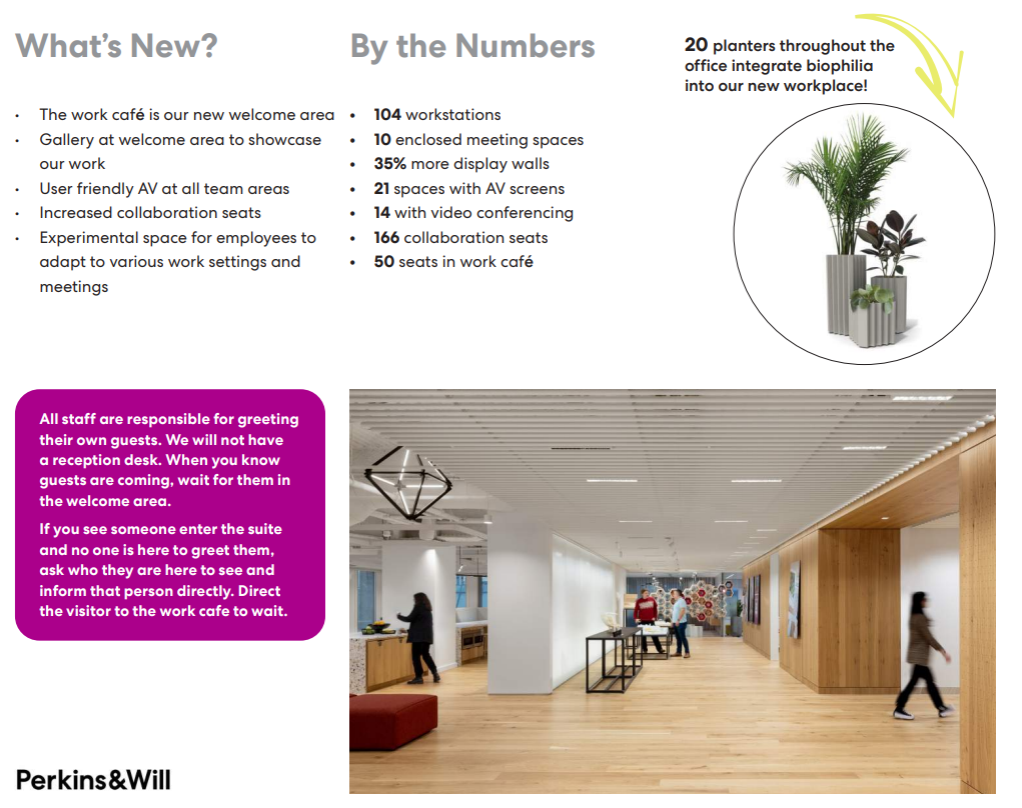PRESS RELEASES FEBRUARY 6, 2024
Boston Studio Reveals Its Sustainable New Workplace
A culture-driven design approach results in a uniquely tailored space that reduces global warming potential by 76%.
BOSTON—Perkins&Will welcomed its staff back to the office this New Year to a healthy, environmentally progressive space that promotes a collaborative design culture. The new workplace for the Boston studio of the world’s second largest architecture firm demonstrates how sustainability, resilience, well-being, regeneration, and social equity can be successfully applied to interiors renovations—all while achieving a 76% reduction in global warming potential.
“We set out to disrupt traditional ideas of what an office can be, placing our designers and architects in the unique position of being their own clients,” says Yanel de Angel, managing director of the Boston studio. “Today, our workplace embodies Perkins&Will’s culture of collaboration and experimentation, as well as our Living Design philosophy.”
Flexible areas for socializing and hosting events create community, while abundant display surfaces make it easy to review work. Creativity is on display through a transformable “gallery wall” curated with images, three-dimensional models, and full-scale building fragments; a large model shop showcases craftsmanship. The firm’s commitment to sustainability and material circularity are apparent in the LEED Gold and Fitwel certifications of the space.
To view the press release in its entirety, click on the link below:
https://perkinswill.com/news/perkinswills-boston-studio-reveals-its-sustainable-new-workplace/
PERSPECTIVES FEBRUARY 6, 2024
3 Strategies for Reducing Embodied Carbon in Interior Renovations
By Jennifer McGrory
In the face of the climate crisis, architects and designers have the responsibility to reduce the carbon impact of our built spaces. Looking beyond the carbon that stems from building operations, the carbon embedded in building materials, products, and systems contributes to environmental degradation and the warming of our planet. Known as “embodied carbon,” these emissions released during the lifecycle of building materials—from extraction to manufacturing to disposal—are responsible for 11% of total global emissions. However, not all projects are the same when it comes to embodied carbon impact. Interior renovation projects present a meaningful opportunity to tackle embodied carbon through smart and strategic design choices.
To view the article in its entirety, click on the link below:
https://perkinswill.com/news/3-strategies-for-reducing-embodied-carbon-in-interior-renovations/


